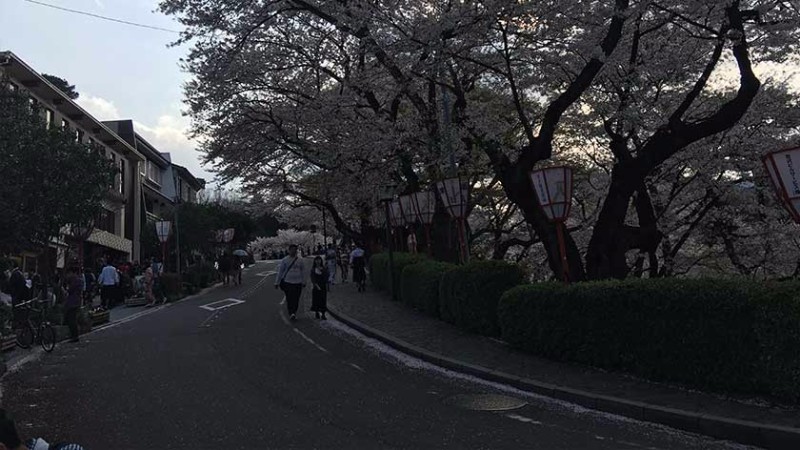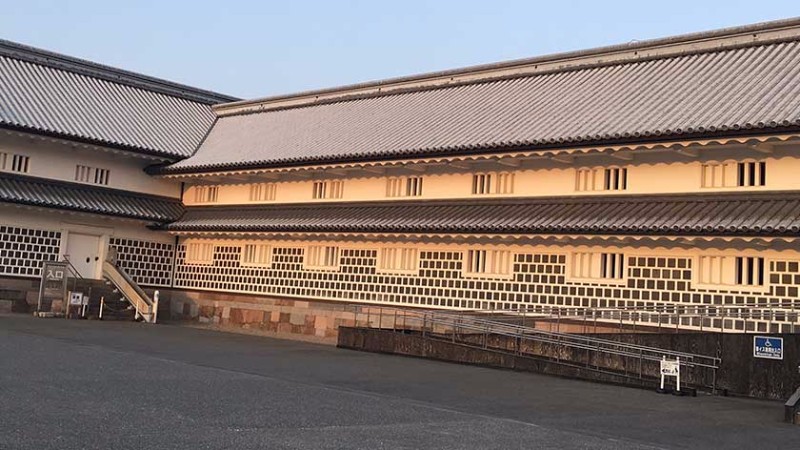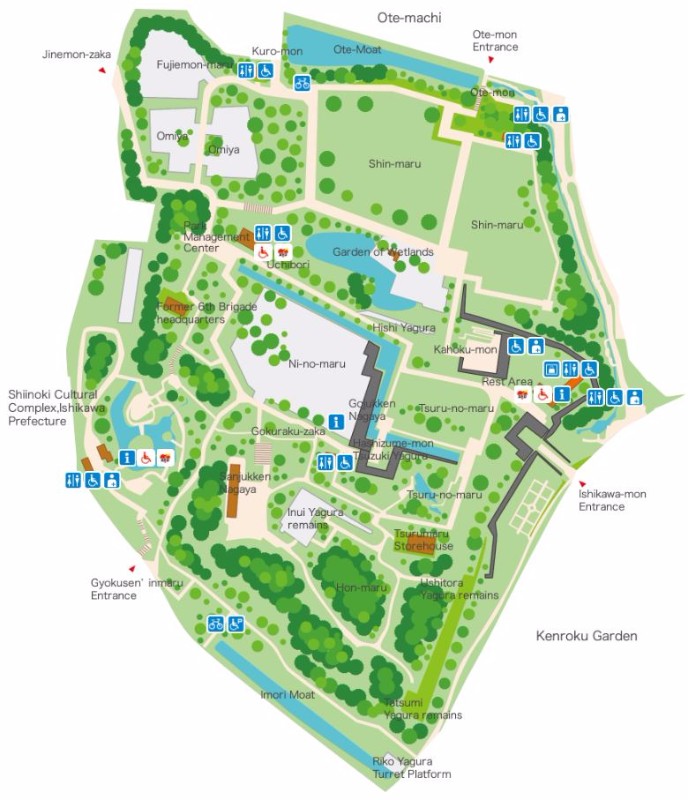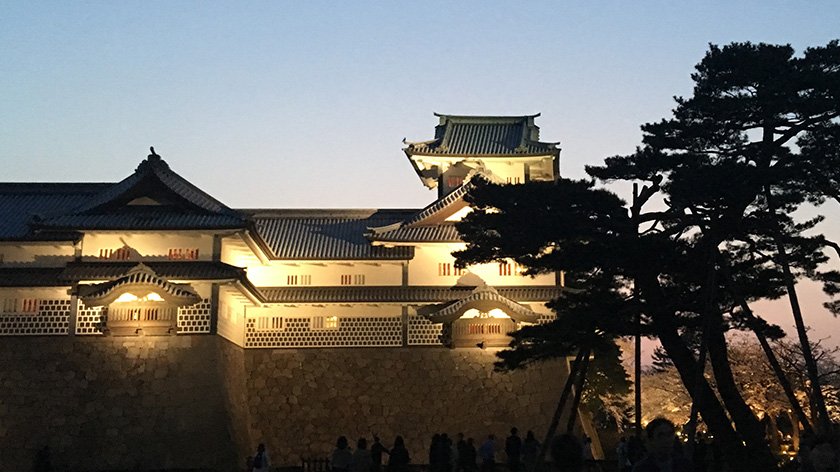
Kanazawa Castle is one of Japan’s many famous Edo-era castles and is mostly accessible to visitors with disabilities.
Background Information
During the Sengoku Period, over 250 fuedal lords ruled over the many regional domains across Japan. In the 1500s, Maeda Toshie, the fourth son of a minor samurai family entered the service of a powerful warlord and quickly rose in rank until he was awarded the domain of Noto. He expanded south into Kaga and the town of Kanazawa. Due to constant skirmishes between warlords, castles became extremely important and Maeda chose Kanazawa as the site for his castle.
The prosperous domain grew and became the second wealthiest in Japan. Kanazawa Castle grew with this wealth and it became so large that it was known as the “the palace of 1,000 tatami” (tatami are Japanese straw mats and are used to measure floor space) by the 18th century. The castle was destroyed by various fires and earthquakes over the centuries, the last fire in 1881 left only two storehouses and the Ishikawa-mon Gate standing. The Hishi Yagura turret, Gojikken Nagaya warehouse, and Hashizume-mon Tsuzuki Yagura turret were faithfully reconstructed using traditional construction methods. The castle keep has yet to be restored.
The castle has distinctive white tiles made from lead. While the main reason for this is fireproofing, it is said that this design was also defensive as the tiles could be melted down into bullets during seiges.
The castle grounds are free of charge and open year-round from 7:00 to 18:00 (March 1 to October 15) or 8:00 to 17:00 (October 16 to February). The Gojukken Nagaya Storehouse and Turrets are open year-round from 9:00 to 16:30 (entry until 16:00) for a small admission fee.
Getting There
The castle can be accessed from stop number LL9/RL8 on the tourist-oriented Kanazawa Loop Bus. All buses on the Loop Bus are wheelchair accessible.
Accessibility
Unfortunately, getting to the castle entrance from the bus stop means going up a somewhat steep road.

Once in the gate, the castle park is mostly flat with smooth pathways. Wheelchairs are also available to borrow at the Ishikawa-mon Gate. Accessible toilets are available at a few locations around the park.
Both the Kahoku-mon and Gojikken Nagaya warehouse have ramps to access the inside of the buildings.
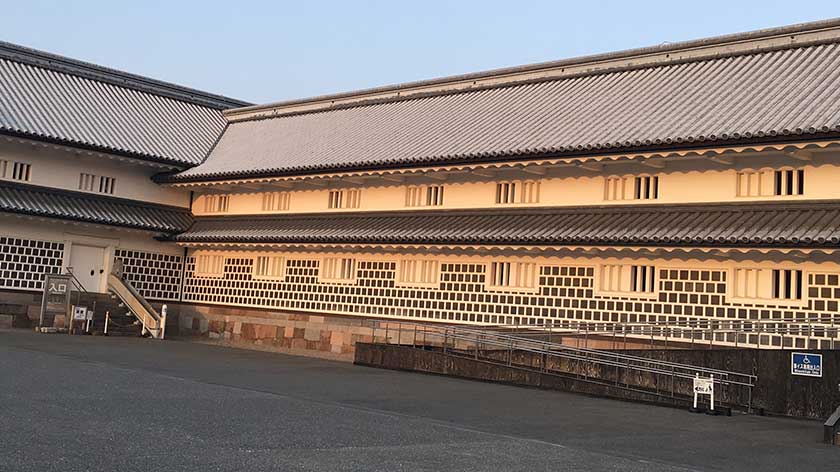
Gyokuseninmaru Garden is not accessible by wheelchair from the main castle grounds due to a steep incline connecting the two areas. Gyokuseninmaru Garden can be accessed by exiting Ishikawa-mon Gate, and entering at Gyokuseninmaru Gate. The garden has a few steps on some paths, so it may not be worth the extra trip to Gyokuseninmaru Gate.
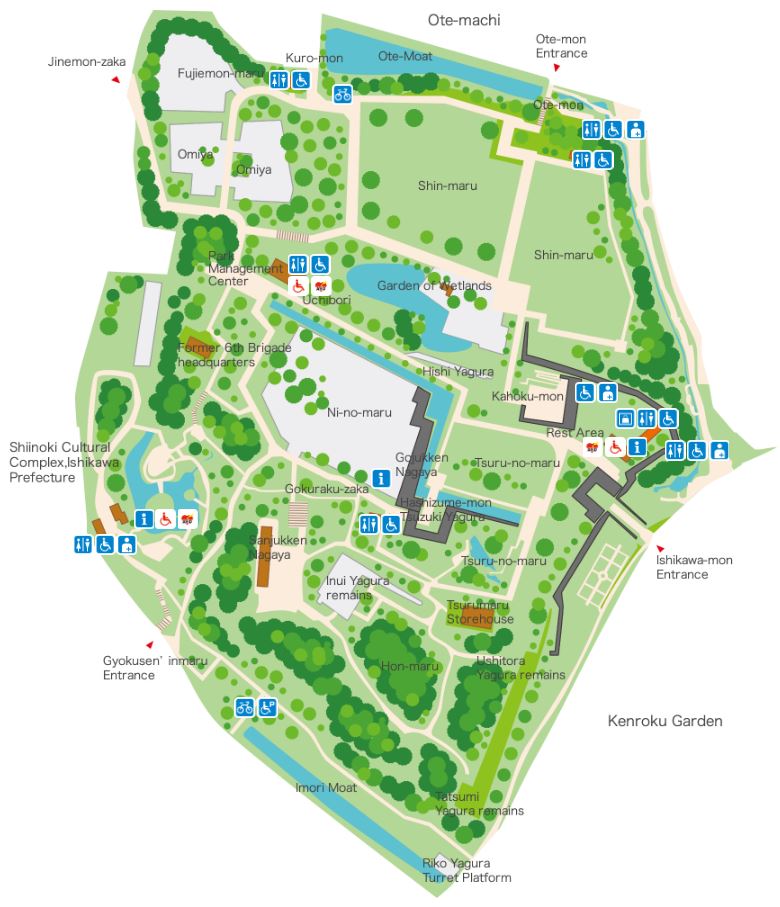
(Map © Ishikawa Prefecture)
Conclusion
When visiting Kanazawa City, Kanazawa Castle is one of the main attractions to see. While its elevated location may mean it is hard to initially reach, the lower part of the site is mostly flat and has adaptations so that disabled visitors can access the buildings. Visiting Gyokuseninmaru Garden can be nice, but the extra distance may not be worth it for some people – especially since Kenrokuen Garden is next to the castle anyway.



